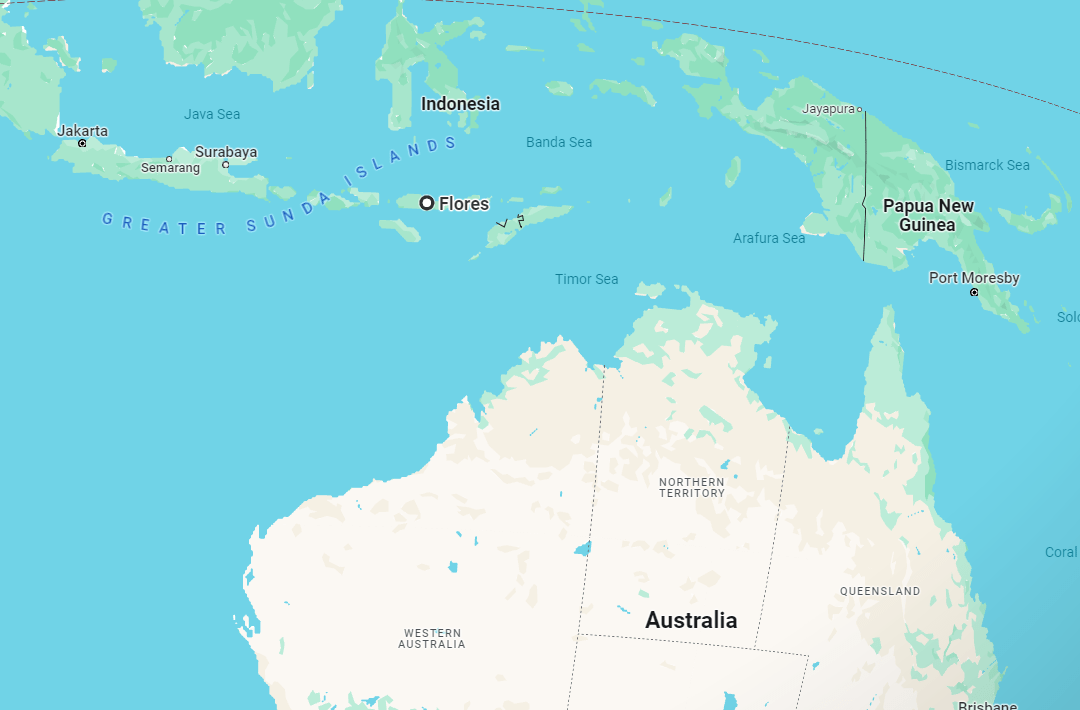Abstract: Experts have said that Homo sapiens evolved from a tribe of as few as 10,000 people about 300,000 years ago, but that does not mean our population on Earth was 10,000. Experts are only saying that genetically, our population could have come from a group as small as 10,000 individuals. The reality is that we know many ancient human species roamed the Earth at the same time. From Homo habilis emerging 2.3 million years ago to Homo sapiens. Most evolved in Africa then branched out, but a few, like Neanderthals, evolved in Europe. The most successful ancient human by far was Homo erectus which survived as a species, emerging over a million years ago in Africa and vanishing just 110,000 years ago in Asia. Although the jury is still out, the even earlier Homo habilis might have survived as a species for over 2 million years. Homo floresiensis, another ancient human species, lived on the island of Flores until about 50,000 years ago.
The story of our long lost human ancestors.
Step into the shadows of prehistory and embark on a riveting journey through footsteps that have long faded from the earth. As we delve into the echoes of these extinct lineages, prepare to explore a world where sapiens shared the stage with other fascinating humans—each species with its own tale of rise and demise. From the enigmatic Homo naledi in the shadowy recesses of African caves to the robust Neanderthals of ancient Europe, this article brings to life the rich tapestry of human diversity that preceded us.
Recent scientific breakthroughs have illuminated a story more intricate than previously imagined, revealing instances of interbreeding between our ancestors and these other human species. Contrary to the traditional biological definition of species, which hinges on the ability to produce fertile offspring, our genetic heritage bears witness to a complex history of interaction and integration. Such revelations challenge our understanding of what it means to be human and highlight the blurred lines in our evolutionary past.
This narrative does not just recount the known human species that vanished after Homo sapiens emerged around 315,000 years ago—it breathes life into their journey from their first emergence to their ultimate disappearance. Follow their chronological order of extinction—from Homo naledi to the Neanderthals—and discover the forces that shaped their fates.
For those hungry for more, The Human Evolution Timeline offers a predominantly visual exploration of the extinction of these ancient human populations. Additionally, Hominin Population Census: A Speculative Journey to 700,000 and 300,000 BCE provides a speculative yet insightful look at the population dynamics of ancient humans at two pivotal moments in our history.
Setting the Stage: Homo habilis, the “Handyman”
Before we kill off all the various ancient humans, let’s establish a baseline for what these humans were like. Let’s use the earliest species we call human to do this: Homo habilis. Regarded by the current scientific consensus as one of the inaugural members of the genus Homo, Homo habilis is celebrated for its rudimentary tool use and the inception of the Oldowan tool culture. These early humans crafted basic tools primarily for scraping, cutting, and breaking open bones, indicating an evolutionary leap towards a more varied diet and potentially more complex behaviors compared to their predecessors.

However, the “handy man” might have been more clever than traditionally acknowledged. If we consider the potential for Homo habilis not just to use, but also to carry tools, their ability to manipulate the environment suggests a more sophisticated level of cognitive function and social structure. They might have used walking sticks for travel or defense, and possibly rudimentary containers for collecting and transporting food or materials.
Whether Homo habilis was this level of clever or not, the fact remains that our ancestors eventually developed these innovative strategies. At some point, our resourceful forebears discovered the value of carrying tools, using walking sticks for travel and defense, and crafting rudimentary containers for collecting and transporting food and materials. It might have been Homo erectus 1 million years ago, Homo heidelbergensis 700,000 years ago, or another ancestor altogether, but the ingenuity of our human lineage is undeniable. I want to highlight this because we often succumb to anthropomorphic biases, portraying previous human species as brutish and unsophisticated. While it’s true that our ancestors were not as intelligent as modern humans, it’s essential to recognize that they were not simplistic or unintelligent either. By acknowledging their resourcefulness and adaptability, we can gain a deeper appreciation for the gradual development of human cognition and innovation.

Such capabilities indicate planning and cooperation within their groups, hinting at the early stages of cultural development and social roles, paving the way for the complex social structures observed in later hominins.
By reimagining Homo habilis as not only tool users but as early innovators in their ecological niches, we open up new narratives about their adaptability and ingenuity.

Hybrid Cousins
Evolution is pivotal to the human story, but equally critical is the chapter on interbreeding. As Charles Darwin described, each time a population of humans migrated to a new environment, they gradually evolved new traits. Over time, these traits accumulated, creating unique races within the species. Sometimes a new trait evolved from within a population; other times, it was introduced. Eventually, these unique populations could become distinct species, yet closely related species could still produce viable offspring for a period.
Modern DNA studies have revealed that our ancestors interbred with other human species, leaving a genetic legacy in our DNA. Today, many modern humans retain Neanderthal DNA in their genomes, suggesting that our ancestors mixed with Neanderthals when they encountered them in Europe and Asia. Similarly, studies have found that modern humans outside of Africa retain a small amount of Denisovan DNA, indicating interbreeding with this enigmatic species. This mixing of genes has likely contributed to our adaptability and resilience as a species.
Before that, our ancestors might have undergone an even more significant mixing of genes. A tentative and speculative idea suggests that Homo sapiens might be a mix of two earlier human species: Homo antecessor, with its flat face and smaller brain, and Homo heidelbergensis, with its protruding face and larger brain. This hypothetical union could have resulted in the unique combination of physical and cognitive traits that define our species. While this idea is still a topic of debate among scientists, it’s an intriguing possibility that highlights the complex and dynamic history of human evolution.
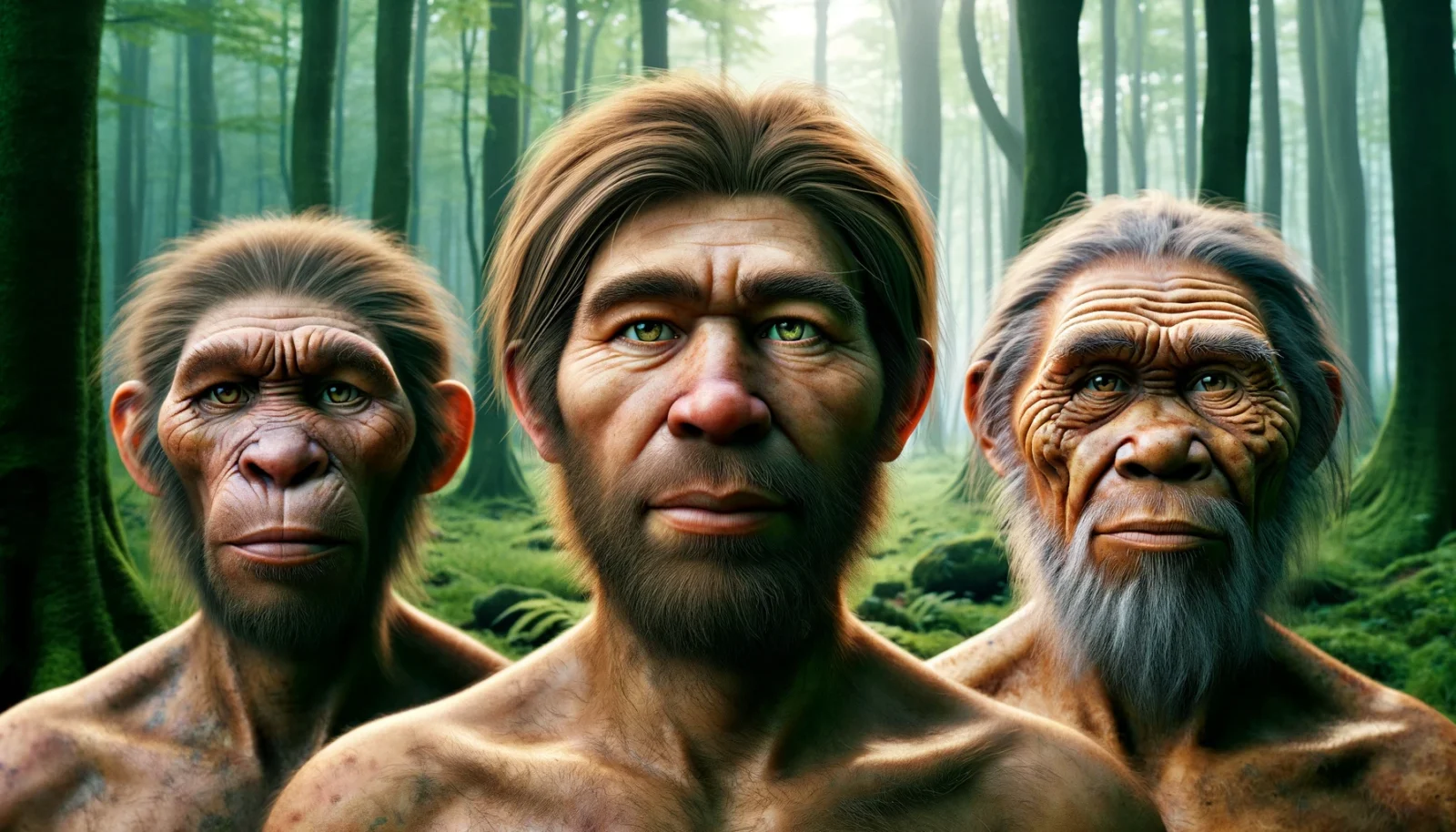
Final Acts: Ancient Human Extinction Events
Now that we’ve painted a picture of what ancient human species were like as they migrated, gradually evolved, and mixed toward modern humans, it’s time to tell their stories. Who were the people who paved the way for modern humans? When and where did they live? What were their cultures, traditions, and ways of life? As we explore the final acts of our ancient human cousins, we’ll delve into the mysteries surrounding their extinction events. From the gradual decline of some species to the sudden disappearance of others, each story offers a unique glimpse into the complex and ever-changing landscape of human evolution.
For every species, there is a final individual, the last echo of a once thriving line. While we can trace the extinction timelines of our ancient cousins through both speculative and concrete evidence, the exact circumstances leading to their disappearance often remain enshrouded in mystery. From what we can tell, most societies perish for multiple reasons that typically include competition, a pandemic, changing climate, or any combination. When precisely the last one of each species drew its last breath, what he or she thought as they lived out their last days, is lost to the sands of time.
Homo naledi: 236,000 Years Ago

Discovered in 2013 within the deep and narrow caves of Rising Star in South Africa, Homo naledi presents a fascinating chapter in our ancient narrative. Originally dated in 2017, this species coexisted with early sapiens from around 335,000 years ago until approximately 236,000 years ago. Their temporal overlap with the emergence of modern humans around 315,000 years ago in East Africa suggests possible interactions or shared landscapes between these two species.
Living in the Shadows: Homo naledi was a unique blend of primitive and modern traits—a small-brained hominin with complex behaviors typically associated with more advanced species. Their deliberate disposal of the dead in remote cave chambers hints at a rudimentary form of cultural sophistication and understanding of mortality, challenging our perceptions of primitive hominins.
Coexistence and Competition: The presence of Homo naledi in South Africa during the same period that Homo sapiens was evolving in East Africa raises intriguing questions about their interactions. Were there competitive pressures for resources, or did the two species manage a coexistence that involved some level of interaction or avoidance?
The Path to Extinction: The reasons behind the extinction of Homo naledi are not fully understood. The changing climate of their era, competition with more technologically advanced Homo sapiens, and possible pandemics could have contributed to their decline. The isolation of their remains in a cave system suggests a retreat from expanding threats or environmental changes, perhaps marking a gradual fade rather than a sudden end.
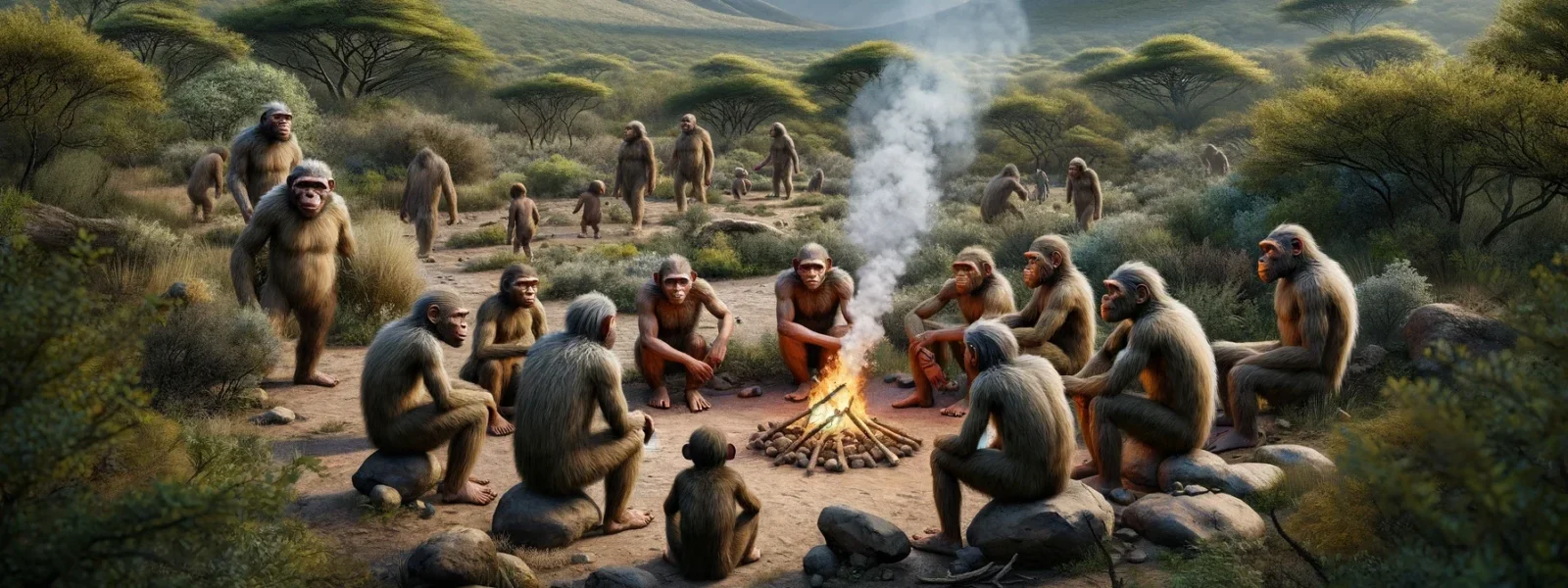
Homo heidelbergensis: 200,000 Years Ago
The saga of Homo heidelbergensis, a pivotal species in human evolution, culminated around 200,000 years ago. This archaic human, ancestral to both Neanderthals and modern humans, once thrived across the diverse landscapes of Europe, Africa, and possibly Asia. Their story is emblematic of the evolutionary bridge they formed, connecting the earlier hominins with the more advanced forms that would follow.
A Final Gathering
In the cooling climates of what is now Morocco, the last known groups of Homo heidelbergensis may have huddled around their fires, unaware that they were the final chapters of their species’ story. These fires, which once symbolized the warmth and safety of their communities, flickered one last time as the shadows of extinction drew near.


Weekly Wisdom Builder
Got 4 minutes a week?
A new 4-minute thought-provoking session lands here every Sunday at 3PM, emailed on Mondays, and shared throughout the week.
Exactly what the world needs RIGHT NOW!
Legacy in Stone and Bone
The legacy of Homo heidelbergensis is not just in the genetic continuities we trace in our DNA but also in the rich archaeological layers they left behind. As skilled hunters and the first to build substantial shelters, their technological innovations marked significant advancements in prehistoric human life. Their use of sophisticated stone tools and the probable development of wooden spears speak to a cognitive complexity that laid the groundwork for future human developments.

Enduring Influence
The archaeological remnants of Homo heidelbergensis, from their hand-axes scattered across old river beds to the remains of their hunting camps, continue to surface today, offering us glimpses into our deep past. These discoveries not only enrich our understanding of where we come from but also remind us of the complex journeys of survival and adaptation that define our shared heritage.
Homo longi: 146,000 Years Ago

The discovery of the Homo longi skull in the lush landscapes of northeastern China marks a profound breakthrough in our understanding of human evolution. This skull, dated to approximately 146,000 years ago, is not just a relic of the past; it represents a critical juncture in the story of human migration and adaptation.
A Mysterious Ancestor from the East: Known affectionately as “Dragon Man,” Homo longi exhibits a remarkable amalgamation of archaic and modern human traits. The skull’s large, broad face and pronounced brow ridges might initially evoke images of Neanderthals, yet its features suggest a lineage that potentially diverged from a common ancestor much earlier than previously thought, possibly around 200,000 to 300,000 years ago.
Bridging Continents and Species: The solitary but impeccably preserved Homo longi fossil challenges existing paradigms of human evolution. It hints at an early dispersal from Africa, proposing a scenario where Homo longi could have shared the vast landscapes of Asia with other hominins. This raises tantalizing possibilities about cross-species interactions and the exchange of traits that might have occurred much earlier than we have evidence for today.
Implications for Human Evolutionary Theory: The features and dating of the Homo longi skull suggest potential influences from Homo antecessor, an earlier hominin that may have left its genetic mark on multiple human lineages. Such connections could reshape our understanding of how modern humans, Neanderthals, and other archaic human species evolved and interacted across continents.
A Puzzle Piece in Human Ancestry: While Homo longi remains represented by a single fossil, its discovery is a testament to the complex web of human ancestry. It underscores the dynamic and intertwined nature of our evolutionary path, reminding us that each new discovery has the potential to alter the narrative of human history profoundly.
Homo rhodesiensis: 125,000 Years Ago

Homo rhodesiensis, often regarded as Africa’s counterpart to Europe’s Homo heidelbergensis, represents a pivotal species. Discovered in Kabwe, Zambia, the species exhibits a mix of robust and modern traits with a large brain size and advanced tool use, reflecting significant cognitive capabilities.
Interbreeding Analysis: The evolutionary journey of Homo rhodesiensis might highlight well the complex nature of species development within the genus Homo. As with other human species, the lines between Homo rhodesiensis and its contemporaries were not always clear-cut. Genetic and morphological evidence suggests that early humans, including Homo rhodesiensis, likely engaged in interbreeding with closely related species. This interbreeding could have occurred as they encountered each other in overlapping territories, facilitated by their innate “pioneering spirit” — an inherent drive to explore and adapt to new environments.
The inherent exploratory nature of Homo rhodesiensis and other early humans is a defining characteristic of the genus. This “pioneering spirit” not only allowed these hominins to traverse vast and varied landscapes but also to interact and genetically mingle with other emerging human species. Unlike earlier primates that may have been more restricted to specific environments, the mobility of Homo rhodesiensis enabled a dynamic exchange of genes and cultures, potentially accelerating the pace of human evolution.
While the exact paths of migration and interaction are still subjects of active research, the adaptability and innovativeness of Homo rhodesiensis likely played a crucial role in their survival and evolutionary success. Their ability to innovate technologically and adapt culturally might have paved the way for the emergence of Homo sapiens in Africa. As such, Homo rhodesiensis not only contributes to our understanding of human evolution but also exemplifies the interconnectedness and fluidity of species boundaries within the genus Homo.
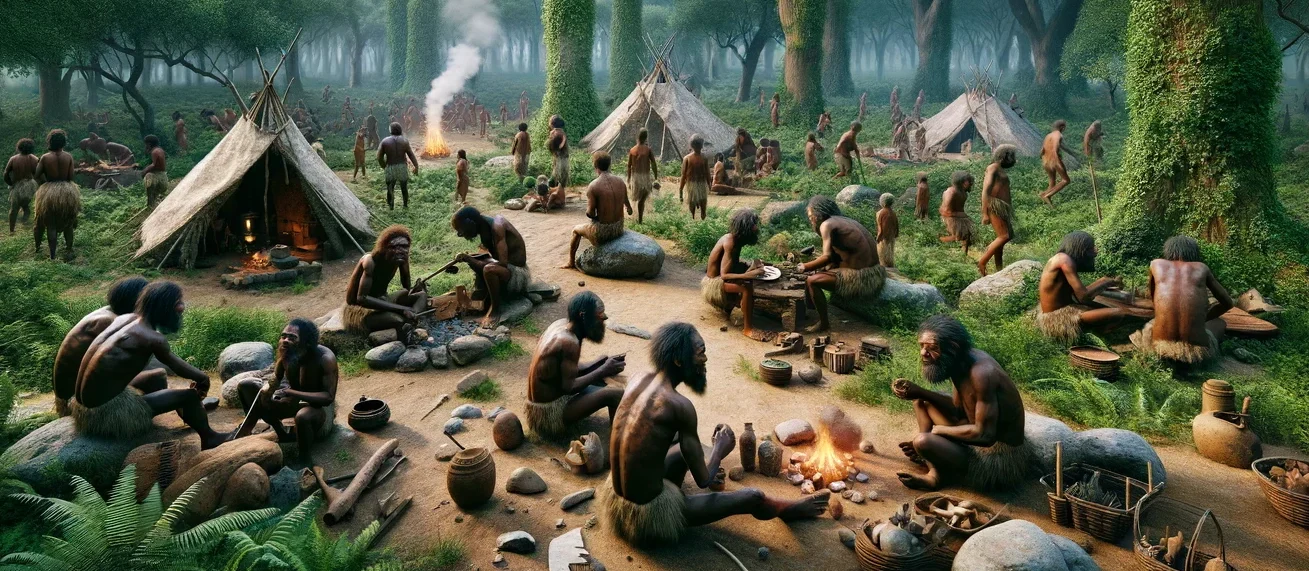
Homo luzonensis: 50,000 Years Ago
Discovered in 2019, Homo luzonensis has dramatically reshaped our understanding of ancient human migration and adaptability. This species, which inhabited the island of Luzon in the Philippines as early as 67,000 years ago—and possibly much earlier with artifacts hinting at a presence around 700,000 years ago—challenges traditional views on the capabilities of early hominins to traverse significant water barriers.
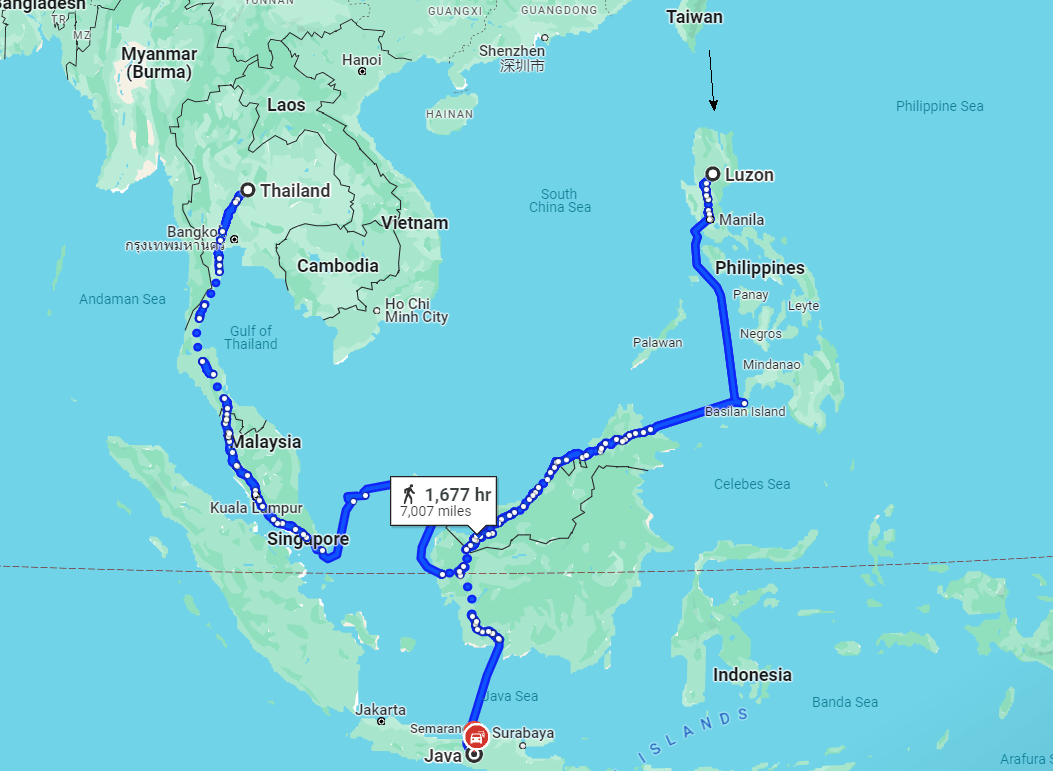
Final Days
By 67,000 BCE, the last of the Homo luzonensis were living their final days in the lush forests of what is now the Philippines. This enigmatic species, known only from a handful of remains, represents a unique branch of the human family tree. Their disappearance likely occurred about 15,000 years before Homo sapiens would arrive in the region, marking the end of a distinct chapter in human evolutionary history.

Homo luzonensis may have originated from an early dispersal of Homo erectus across Southeast Asia, sharing similarities in tooth structure, geographic proximity, and timelines, yet exhibiting traits suggesting a possible earlier ancestry. While theories propose an even earlier ancestor like Homo habilis, the limited fossil record and challenges in DNA extraction hinder confirmation. Their smaller brain size and primitive features compared to Homo habilis and Homo erectus raise questions about insular dwarfism—an adaptation to island life with limited resources. This could suggest that, if descended from later hominins, their brains were complex and adapted, albeit smaller. However, it is more plausible that Homo luzonensis and Homo floresiensis evolved from an early branch of Homo habilis or an earlier species, a theory that remains highly speculative until more evidence is found. Despite these uncertainties, the physical similarities they share with Homo floresiensis—distinct species with traits like curved toe and finger bones, as well as premolars reminiscent of Australopithecus—underscore the diversity and adaptability of ancient human relatives who occasionally intermixed, giving rise to new evolutionary solutions.
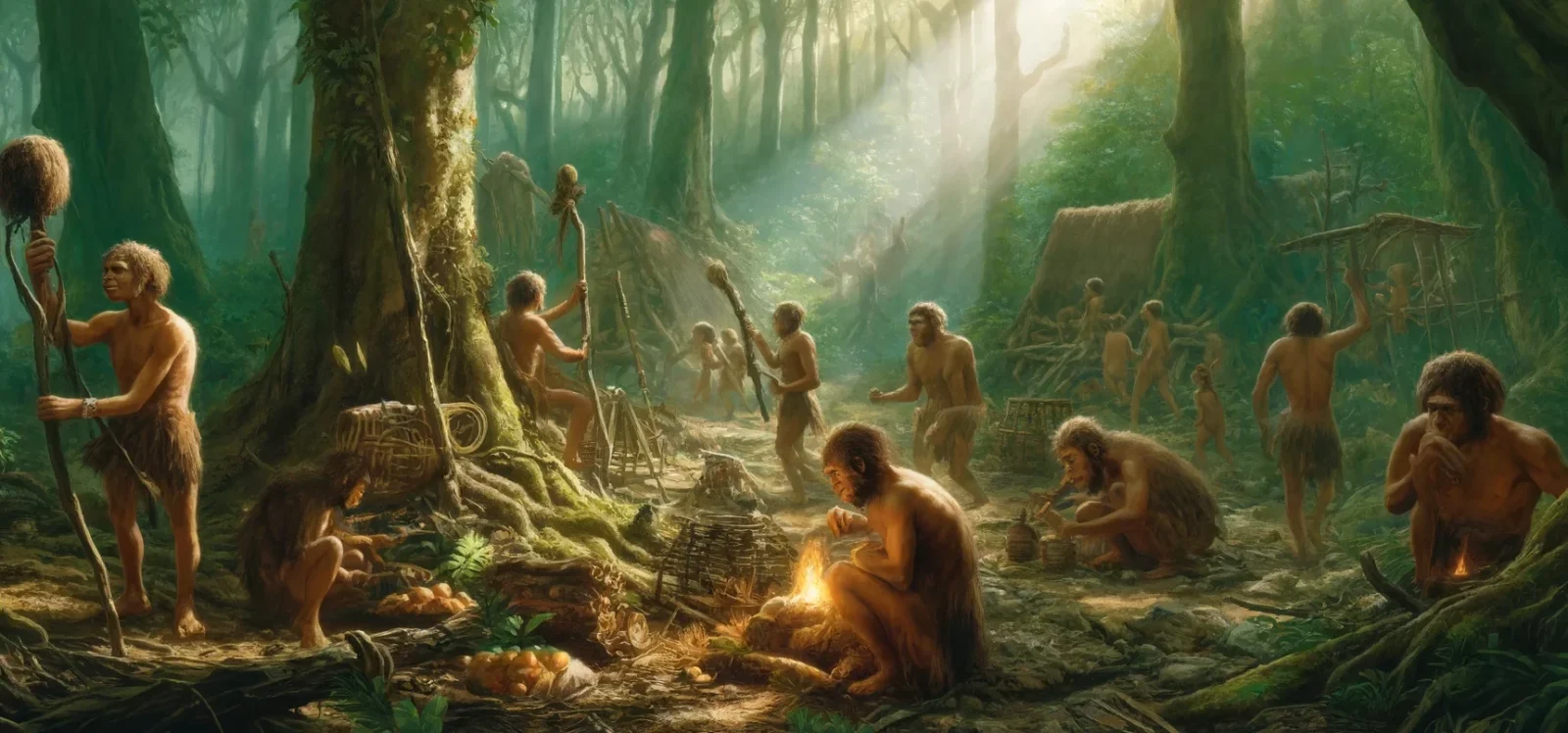
Homo erectus and the Long Reign of an Upright Species: 50,000 Years Ago
Dominating the evolutionary landscape for nearly two million years, Homo erectus stands as the undisputed champion of survival among human ancestors.
Homo erectus is known to have reached the island of Java in Indonesia more than a million years ago. The exact means of their arrival, whether intentional or accidental, is still debated, but their presence indicates early hominin dispersal across water.
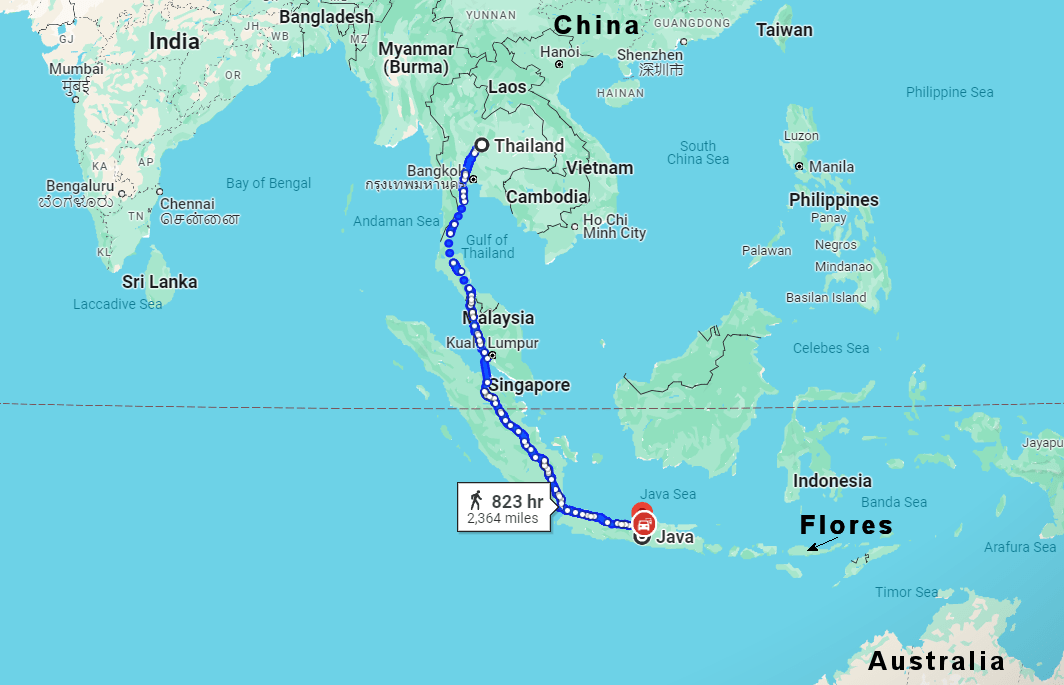
Homo erectus Final Gasps
The intricate tapestry of early human migration in Southeast Asia is highlighted by the intriguing stories of Homo luzonensis, Homo floresiensis, and Homo erectus, particularly the Java Man. These species collectively provide a fascinating glimpse into the adaptability and diversity of early hominins in this region.
When considering the potential hominin population across the islands of Greater Malaysia, Java, Flores, Indonesia, Brunei, and the Philippines, it is conceivable that each habited island might have supported a few thousand individuals at a minimum. During the peak of their collective heyday, combining all hominin species, the total population at times could potentially have reached over 100,000. This estimate is highly speculative but highlights the possible extent of ancient human and hominin dispersal and adaptation to these lush, resource-rich environments. Such numbers would depend on numerous factors, including environmental conditions, available technology, and the biological capabilities of each species.

Homo luzonensis, discovered in Luzon, the Philippines, dates back approximately 67,000 to 50,000 years ago. This relatively recent find adds a new dimension to our understanding of human evolution in Southeast Asia. While not directly linked to Homo erectus, the presence of Homo luzonensis suggests a complex pattern of hominin activity in the region, possibly indicative of multiple migration waves and localized evolutionary developments. Their unique physical traits and the tools associated with them hint at a distinct way of life, adapted to the challenges of their environment.
Moving southward, the story takes us to the island of Flores, where Homo floresiensis, affectionately known as the “Hobbit,” thrived from about 190,000 to 50,000 years ago. The discovery of this diminutive hominin challenged previous notions about the geographical and ecological limits of early human migrations. Despite its small stature and brain size, Homo floresiensis exhibited advanced tool-making skills that were sophisticated enough to support their survival in isolated island conditions. Their presence on Flores raises questions about whether they evolved from a population of Homo erectus that became isolated and underwent significant physical changes due to island dwarfism.
Further west, in Java, the well-documented Homo erectus, specifically known as Java Man or Homo erectus erectus, provides a direct connection to one of the earliest known hominin migrations out of Africa. Dating back to as much as 1.8 million years ago, these early humans represent a significant chapter in our prehistoric narrative. Java Man exemplifies the classic features of Homo erectus with its considerable brain size and more modern human-like body proportions, which were well-suited to a variety of ecological niches across Asia.
By 50,000 BCE, Homo erectus, once widespread across Africa, the Middle East, Europe, and Asia, was nearing the end of its remarkable journey through prehistory. After thriving for nearly two million years, their presence had dramatically contracted to a few remaining enclaves primarily in Asia. Isolated and diminished, these last groups of Homo erectus were the final echoes of a species that had once been a dominant form of early human life, paving the way for future hominins.

How long after this period the last of the Homo erectus survived is unknown. The final thoughts of the final one of any such self-aware, sentient, and intelligent being likely oscillated between despair over their impending loss and hope that others of their kind might still survive somewhere in the world.

Homo floresiensis: 50,000 Years Ago
Homo floresiensis lived on the island of Flores in Indonesia between 50,000 and 190,000 years ago. They are nicknamed the “Hobbit” because they are the shortest of modern human species with males reaching only about 3’10”. This is about a foot shorter on average than modern-day pygmies in Africa.

The island of Flores itself has likely been separated from other landmasses for at least 10 million years. This means the floresiensis people had to navigate the seas to get there. How they arrived on the island more than 200,000 years ago remains a mystery. They had to navigate across sea channels, the shortest of which spanned several miles of open water, a formidable task without modern seafaring technology.
The current thought is that sapiens were the first to become fluent sea faring people by 70,000 years ago, and likely much earlier. Our closest human species, neanderthal and denisovan, likely traversed waters too but we’re still seeking clear evidence. Before that we know other human species used boats too. The oldest known for sure is Homo erectus over 1 million years ago.
All this means the floresiensis people arrived by some form of watercraft. This implies that the floresiensis people might have independently developed rudimentary seafaring abilities. However, their origins remain shrouded in mystery. The answer likely lies buried beneath the lush jungles of Flores, waiting to be unearthed.
Their ancestry is still under debate too. They walked upright, used stone tools, and had a complex skull structure. They controlled fire and hunted giant rodents and dwarf elephants. They were probably preyed upon by Komodo dragons, the famous large lizard of Indonesia.
What sets the floresiensis people apart from later humans like Homo heidelbergensis is their small stature, brains smaller than those of Homo habilis, disproportionately large feet relative to their body size, and primitive shoulder joints. Their skulls were larger and thinner-walled compared to Australopithecus ancestors, with a shortened base similar to later Homo species. However, their brain size was smaller than Homo habilis implying the possibility they branched before them. While unlikely, it’s an intriguing line of inquiry to follow up on. These physical traits might have evolved due to their unique environment on Flores, or they might indicate descent from a species earlier than Homo habilis. This raises the classic nature versus nurture question: Are their distinctive shoulder joints inherited from an earlier species known for such features, or did they evolve specifically for climbing trees, possibly as a strategy to escape predators like Komodo dragons? Similarly, did their unusually large feet develop as an adaptation to the island’s rugged terrain? These questions form an intriguing narrative as archaeologists continue to uncover more about this enigmatic species.
This map showcases Indonesia, Flores Island, and Australia, key regions in the story of human migration. Homo floresiensis thrived on Flores (inset) between 190,000 and 50,000 years ago, arriving well before Homo sapiens ventured into Australia (50,000-65,000 years ago). How they reached Flores remains a fascinating mystery.
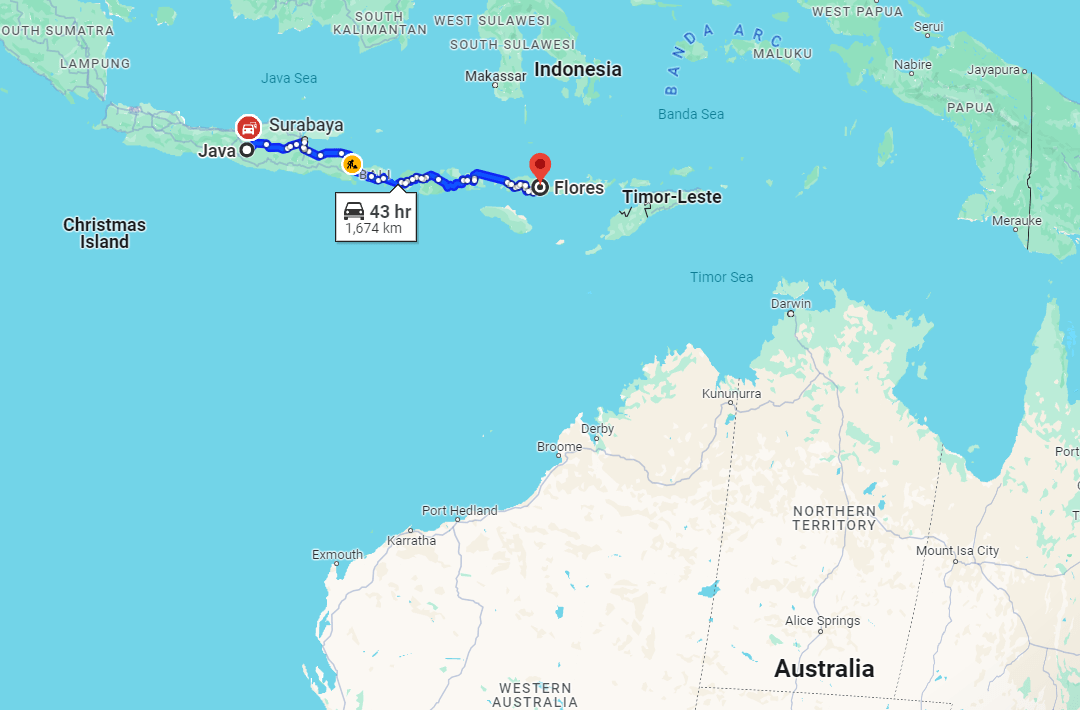
Final Retreat
By 48,000 BCE, the enigmatic Homo floresiensis faced their twilight on Flores Island. This diminutive and intriguing species, possibly the last descendants of Homo habilis or the Asian Homo erectus lineage known as the Dmanisi people, vanished shortly after modern humans arrived in the region. Their extinction highlights the complex interplay of human evolution and migration, marking the end of a unique chapter in the history of human diversity on the isolated island landscapes of Southeast Asia.
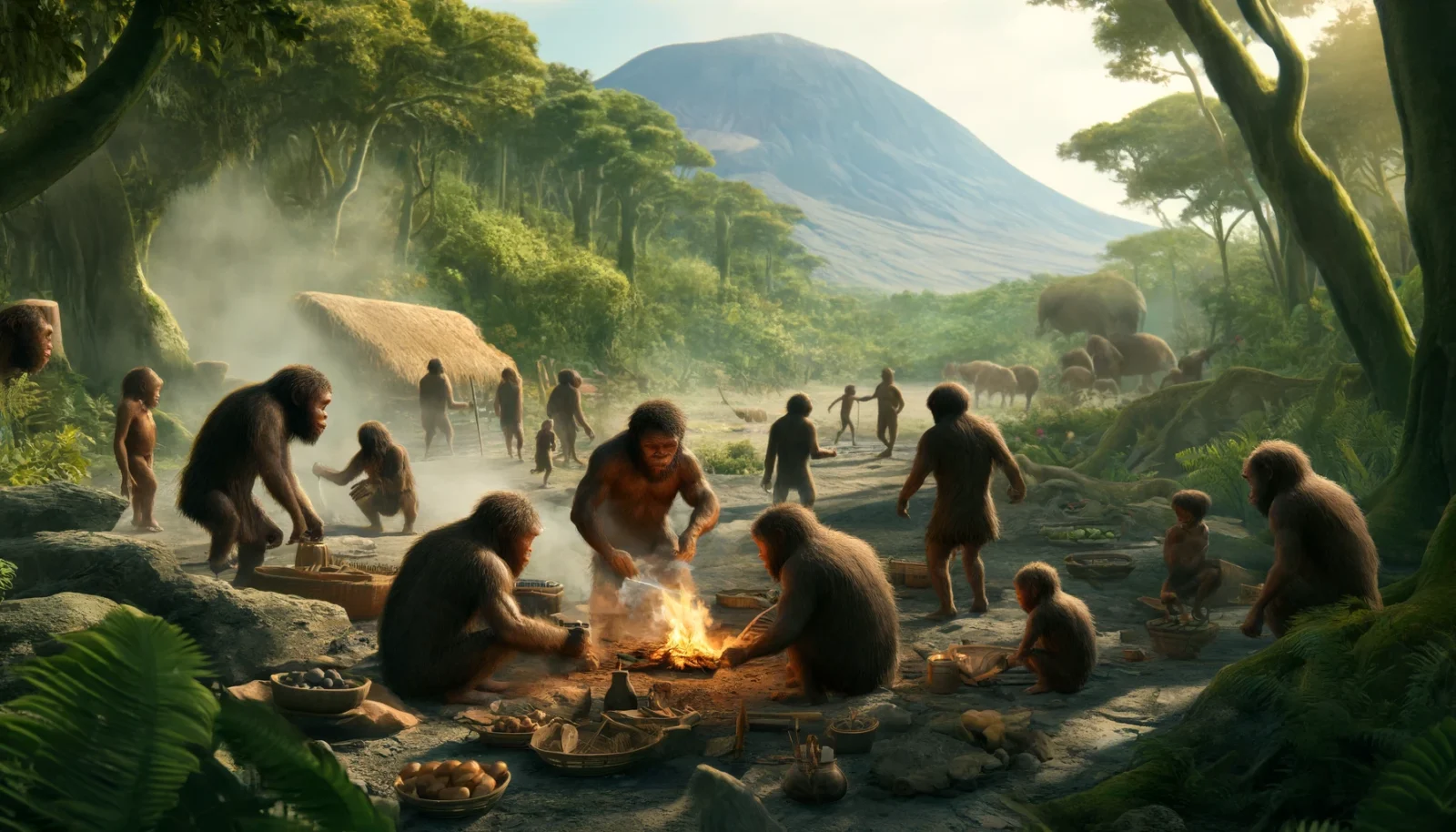
Denisovans: 40,000 BCE
By 40,000 BCE, the last remnants of the Denisovans were eking out an existence in the harsh landscapes of Siberia. This elusive group of archaic humans, who once roamed widely across Asia, found their final refuge in the expansive and rugged terrains of what is now the Altai region. The Denisovans, known mostly through scant genetic and fossil evidence, represent a mysterious chapter in human evolution. Their gradual disappearance from the historical record around this time marks a significant moment in the story of human survival and adaptation, as their genetic legacy continues to influence modern human populations, particularly those in Melanesia and other parts of Asia. The fading presence of the Denisovans in these remote parts of Siberia underscores the dynamic and often unforgiving nature of prehistoric human life.
Denisovans, though less well-known than their Neanderthal cousins from whom they evolved, also left behind a genetic legacy that persists in the DNA of modern populations, particularly among indigenous groups in Melanesia and parts of Asia. This connection underscores the profound and enduring impact of Denisovans on human evolution, serving as a poignant reminder of our interconnected histories and the intricate web of shared ancestry that links diverse human populations across the globe.
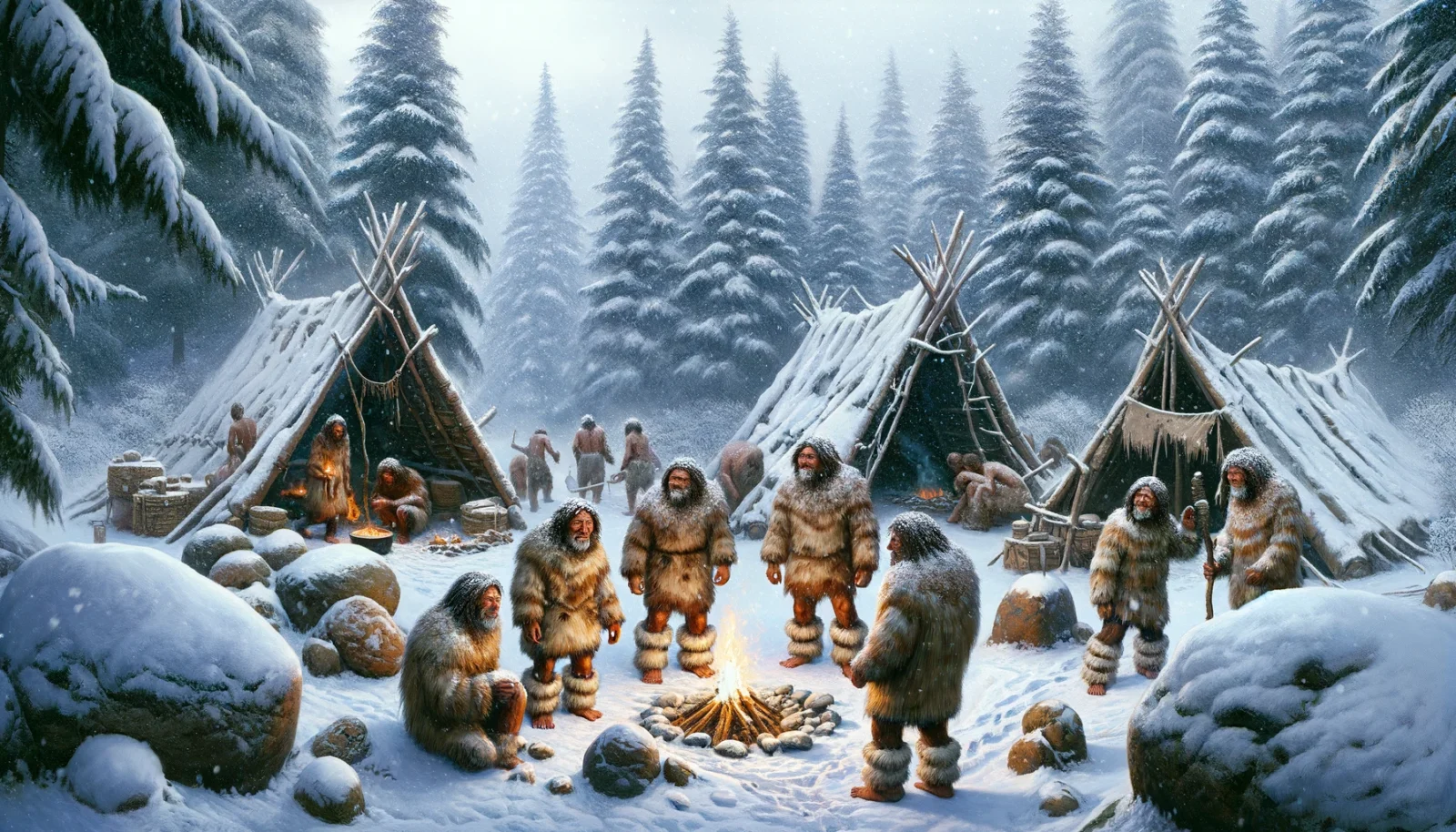
Neanderthals: 29,000 BCE
By 29,000 BCE, the Neanderthals, a distinct branch of humanity with robust features and a formidable presence, were nearing the end of their tenure on Earth. Neanderthals, once widespread across Europe and parts of Asia, were gradually diminishing in numbers, their territories and niches increasingly encroached upon by modern humans. This poignant scene captures a moment of coexistence, interaction, and interbreeding between these two human species. It underscores the complex dynamics of survival, competition, and eventual assimilation that characterized the late Pleistocene, as Neanderthals left behind a genetic legacy that persists in the DNA of many modern Europeans and Asians today. The image serves as a powerful reminder of our shared, yet divergent evolutionary paths.
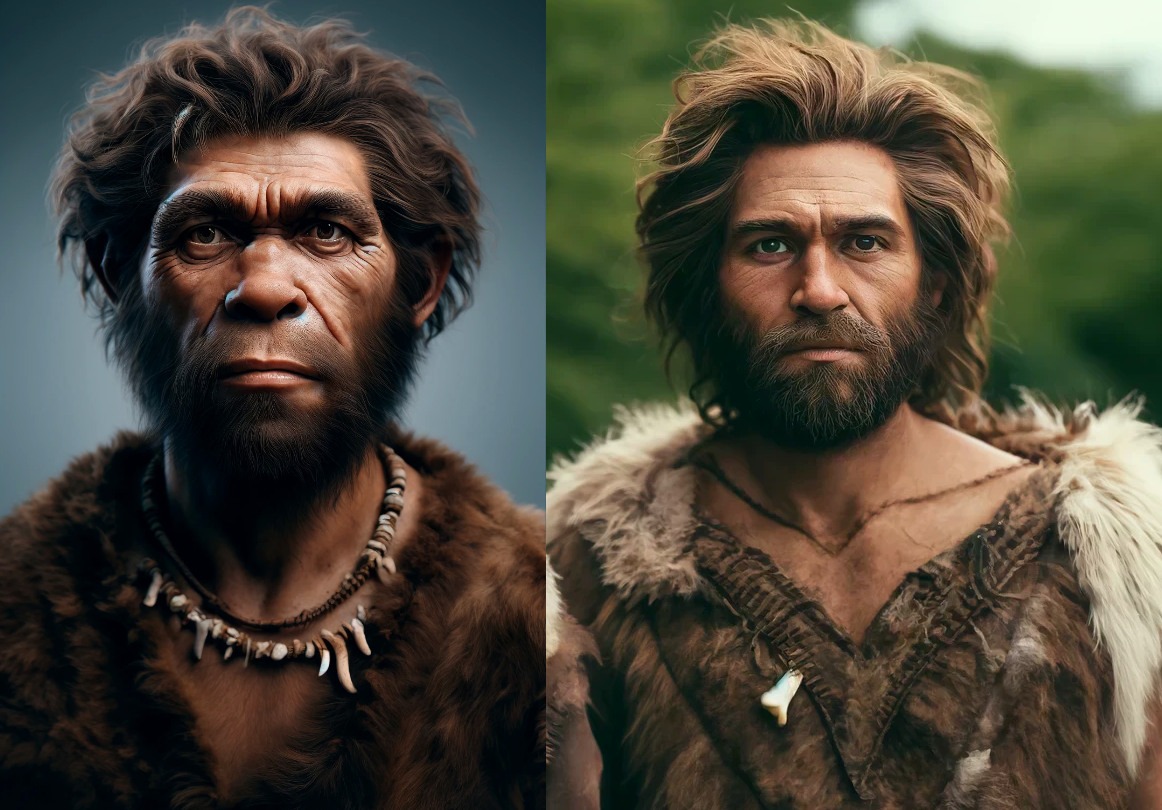
The speculative nature of this narrative underscores the dynamic yet unclear picture of early hominin distribution and interaction, highlighting the need for caution in interpreting these ancient population dynamics. This narrative, while grounded in speculation, helps us imagine the ancient world, offering a glimpse into the complex web of life that preceded us.
For a descriptive and visual evolutionary journey from neanderthals to humans, check out: Beyond Human Bias: Reassessing Neanderthal Intelligence.
Echoes of Extinction and the Path Forward
As we trace the final chapters of these ancient humans, we not only recount tales of survival and extinction but also celebrate the enduring legacies that shape our modern genetic tapestry. The stories of Homo luzonensis, Denisovans, Neanderthals, and other relatives offer profound insights into the resilience and adaptability of humans. Each species, from their first emergence to their last fading steps, contributed to the complex mosaic of human evolution.
These narratives, while speculative in nature, invite us to ponder the intricate web of life that preceded us and to appreciate the interconnected histories that weave through our DNA. They remind us that our existence today is built upon the myriad paths trodden by those who came before us, highlighting our shared heritage and the transient nature of existence.
Yet, as we explore these ancient extinction events, we are also reminded that evolution is an unending journey. Homo sapiens, like our cousin species before us, will one day face our own twilight, whether by evolving into new species or possibly facing extinction. The future of our species may well depend on our ability to navigate our genetic destiny, harnessing advances in science to enhance our adaptation to an ever-changing world.
Optimistically, I foresee Homo sapiens actively shaping our genetic future, gradually perfecting our genetic code over the next few millennia. Over the span of millions of years, it’s reasonable and likely that splinter groups of humans will branch off, allowing natural selection to chart new evolutionary paths. These future humans, whatever form they take, will continue the legacy of adaptability and innovation that has defined our genus from its inception. In a scenario reminiscent of the diverse universes depicted in science fiction like Star Trek and Star Wars, the future could be filled with humanoid descendants from Earth—our ultimate legacy, thriving in our corner of the Milky Way galaxy.
— map / TST —




